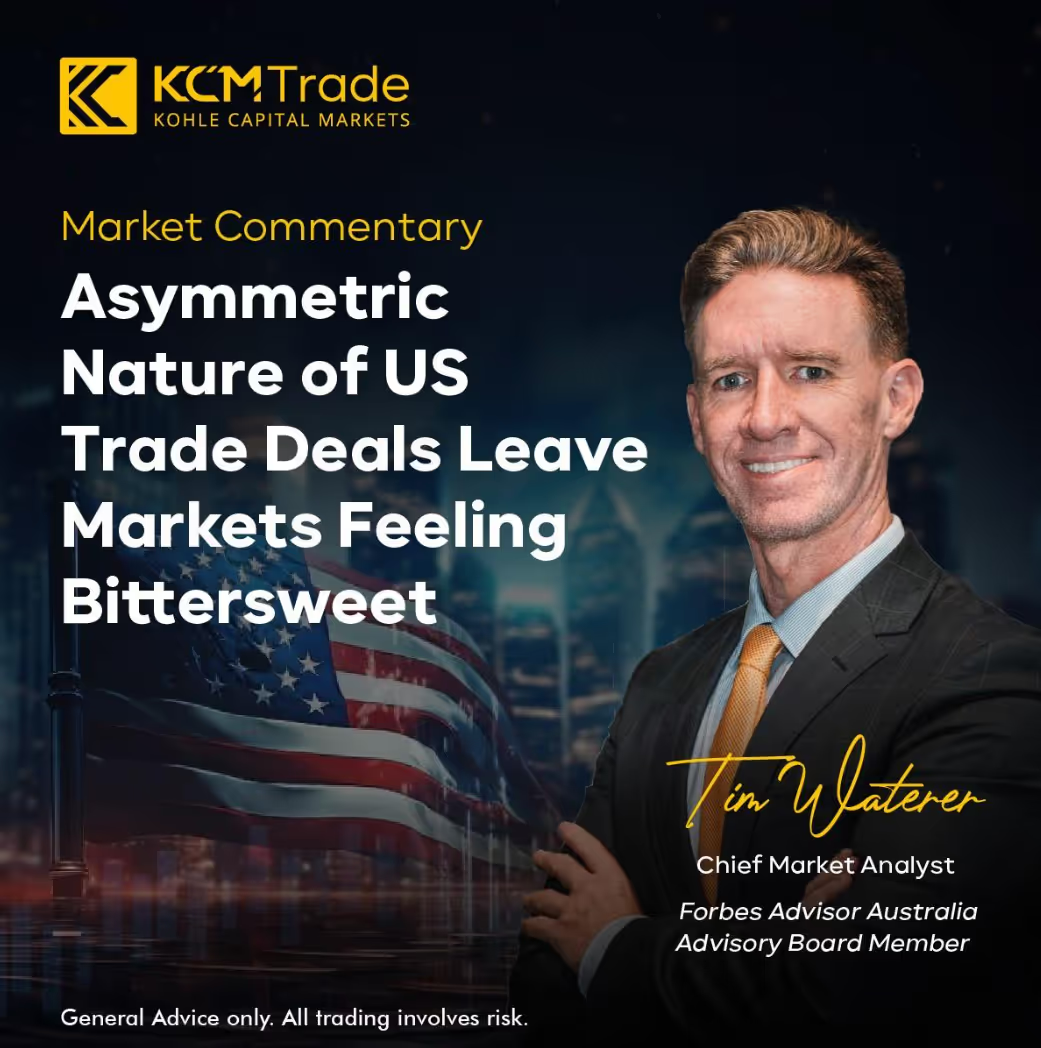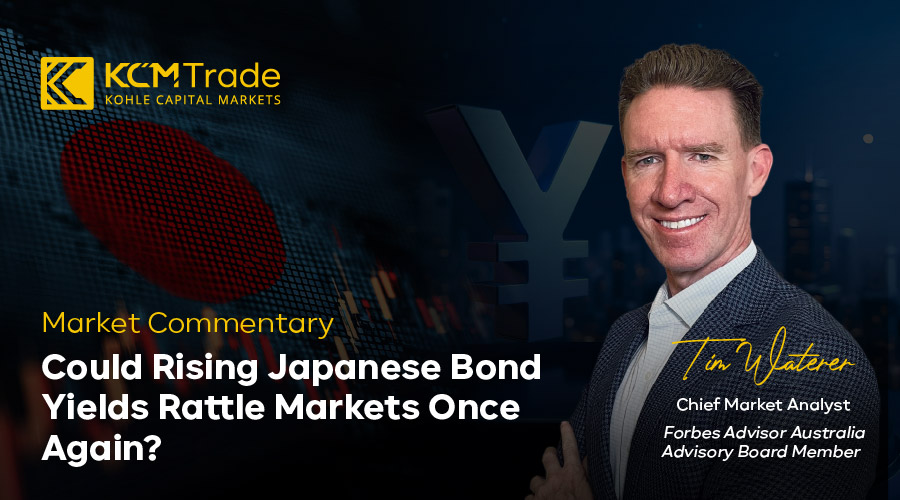Asymmetric Nature of US Trade Deals Leave Markets Feeling Bittersweet
A flurry of trade deals has been finalised in the closing weeks of July, with the US putting pen to paper with the likes of the UK, Japan, Vietnam, the Philippines, Indonesia (though limited details are available) and the EU (European Union).

However, the apparent, asymmetric nature of the trade deals which have been signed (where the US faces lower of zero tariffs versus the approx.15-20% tariffs charged on trading partners) has left the market with a somewhat bittersweet feeling. Bitter, in the sense that the trade deals on paper do appear heavily weighted in favour of the US, but sweet because the final tariffs are easier to swallow than levels which had previously been threatened by the US President. This bittersweet taste is a reason markets are struggling to maintain enthusiasm from the deals, with US trading partners arguably facing tougher trade hurdles and by extension, economic challenges than they were prior to Trump’s White House return.
US-China trade talks are another reason traders have turned slightly circumspect, as we wait to see if the tariff pause will be extended beyond the August 12th deadline or not. Any failure to extend the tariff pause could really throw a spanner in the works for risk assets should the world’s two biggest economies start ratcheting up tariff levels on each other again.
The USD has perked up due to the spate of trade deals signed (ahead of the end-of-month deadline) with the perception being that the US has emerged as the winner at the negotiating table. The Dollar Index (DXY) has made a run higher to 98.80 (as of early Asian trading hours on Wednesday). Whether the USD can rally further could depend on what tone is struck by the FOMC this week. While no rate cut is expected, it will be interesting to see whether Trump’s unsubtle criticisms of the Fed Chairman have been enough to persuade a dovish tilt from the Fed. If the US central bank does seem more inclined to lower rates in coming quarters that could dent the Dollar.
Gold has been on the back foot this week due to a combination of US trade deals and a resurgent Dollar. The gold price stumbled down towards the $3300 level where buying interest picked up to stabilise the price, while a pullback in US yields (with the 10-year treasury yield falling approximately 10 basis points on Tuesday) and an inconclusive outcome from the latest US-China talks helping the precious metal to stage a modest recovery. With spot gold hovering around the $3327 level (in early Asian trading hours on Wednesday), levels to watch include resistance at $3352 and $3378, ahead of the psychological $3400 level. On the downside, support again arrives at $3300 which protected the recent downswing. If the US and China do manage to extend the tariff pause beyond the August 12th deadline, this could pressure gold due to a pullback in safe haven demand. Conversely, if no agreement is reached, gold could be marching back in the direction of $3400.

A sense of urgency has returned to the oil price in response to Trump tightening the deadline on Russia from 50 days to 10. The price of crude has jumped this week (by approximately 5%) now that the timeline for potential secondary tariffs on Russian oil has been brought forward, with supply risks entering the equation. It is not yet clear how secondary sanctions may impact the buying decisions of Russia’s largest oil customers (namely China, India, and Turkey), but the prospect that they may need to look elsewhere to source their energy needs has reinvigorated the oil price this week. But there may be limitations on just how much the oil price may rally, with OPEC+ likely looking at ramping up production figures once again come September. For now, oil is headline driven, with the next steps in US-China trade negotiations also likely to impact the price. Any failure to extend the tariff pause between the two nations would likely pressure energy prices.

There are plenty of events on the calendar this week which could shift the sentiment needle. The FOMC meeting (and their messaging on rates), US Core PCE data (a key inflation gauge) and several US labour market gauges, headlined by Friday’s Non-Fram Payrolls (NFP) figures. US interest rate expectations will be shaped by how the cards fall on the macro data front this week. So, between trade negotiations and an action-packed economic calendar, there will be no shortage of things for investors to chew over between now and the end of the week.























